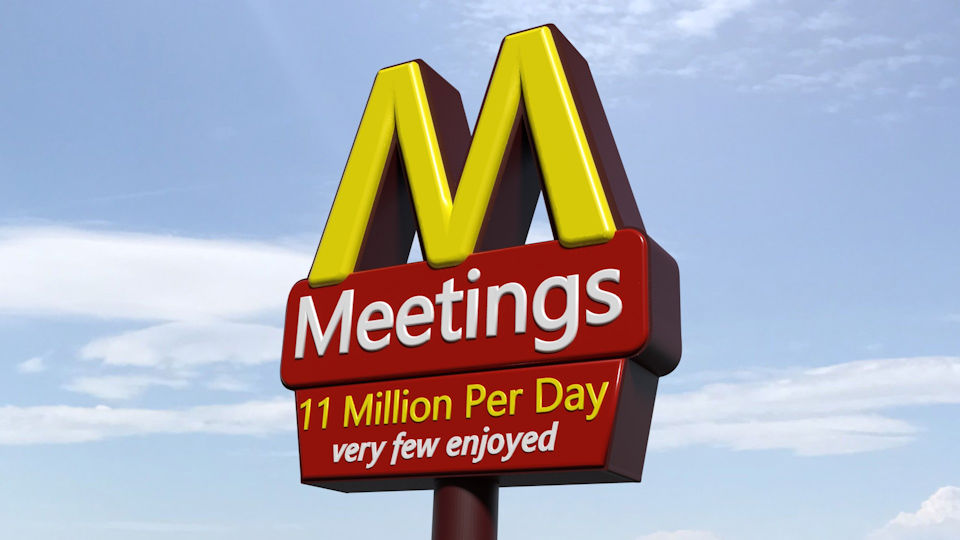
American Chemical Society | Industry | Industry Matters Newsletter | Embrace Hierarchy
None Of Us Is As Dumb As All Of Us
Industry Matters Newsletter 11 August 2022
“Meetings: None of us is as dumb as all of us” is the caption for one of my favorite fake motivational posters. I went looking for proof it could be true. I never found definitive proof, but I did find a references suggesting it is.
The radio show Car Talk provides the first evidence I encountered. Tom and Ray received a question about electric brakes on the show. Each clearly stated they’d never heard of electric brakes. Their complete lack of knowledge did not stop them from attempting to answer the question. Their answer prompted The Andy Letter, concluding the hosts [KJ1] “proved that even in a case where one person might know nothing about a subject, it is possible for two people to know even less!”. The Andy Letter episode supports “none of us is as dumb as all of us”, at least for two.

The Andy Letter conclusion prompted me to wonder how collective intelligence is influenced by group size, whether the two can be correlated. Such a correlation, if it could be made, might point to an optimum meeting or team size. Such a correlation would give a group size that ensures group wisdom surpasses individual wisdom, showing where banding together provides benefits. I went looking for data, hoping to find support for “none of us is as dumb as all of us”, and ways to overcome it.
Price’s law shows adding participants generates limited returns. Price’s Law states half the work is done by the square root of the total number of people who participate in the work. Price’s optimum size is four. Add more people and you end up adding dead weight faster than productive workers. Larger meetings mean more non-contributors, more social loafing. [KJ2] Add another person to a group of eight and you only get about half-a-person of extra output according to Price. Adding a sixteenth member to a group of fifteen adds less than a third-of-a-person of extra output. As Ringlemann famously observed, loafing is more likely in larger groups. Price’s Law and the Riglemann effect both show bigger groups may be counterproductive. “None of us is as dumb as all of us” is due, at least impart, to people loafing in large meetings.
I endured many meetings during my industrial career. I don’t remember enjoying many.
Meeting experts confirm my observations. Over 11 million meetings are held per day with two-thirds of employees saying meetings hinder productivity. Attendees say nearly 80% of meetings are boring. Yet, the amount of time spent in meetings continues to increase.
Meetings changed dramatically over my thirty-year career. There was a clear hierarchy early in my career. Senior folks went to important meetings. I was largely left to work in the lab. Information got disseminated as needed.
The overheads and vu-graphs used early in my career are long gone. The most significant change is not about technology, but attendance. Everyone now attends. Gone is the hierarchy of my early career, replaced by the expectation of everyone attending every meeting. Those actually participating in the meeting, either by presenting data or offering comments, are but a fraction of the attendees. Meetings got larger and productivity went down. Price may be correct.
We assemble into teams having meetings just as animals assemble into herds, flocks, gaggles, prides, and packs. We find protection in numbers. We spread the impact of decisions across the larger group. In the world of R&D, we seek technical answers in much the same way animals seek food. The foraging behavior of animals is where I found something that resonated with me regarding teams and meetings.
Animals, ignorant of the location of food sources, risk starving. Herds, flocks, gaggles, prides, and packs form, in part, because groups of animals are better at finding food[KJ3] . The benefit of banding together, even when resources are severely limited, outweighs the competition for the food supply. Groups of 6-10 fare better at finding food than smaller groups. More than 6-10, competition becomes an issue. Less than 6-10, the risk of everyone starving is higher. Just like Tom and Ray, a small collective can fare worse than separate individuals. It can be dumber.
I am not alone in correlating foraging behavior with optimum meeting size. Jeff Bezos rule that team meetings should be small enough to be fed with two pizzas. That’s eight, give or take. Many others similarly have concluded eight is optimum or near optimum.
One way to avoid “none of us being as dumb as all of us” is to embrace hierarchy. Keep teams and meetings small. Let leaders of those teams meet in small teams to share information. Embracing the hierarchy makes everyone more productive. There is less time devoted to meetings and more to real work. It will also make the meetings attended less painful.